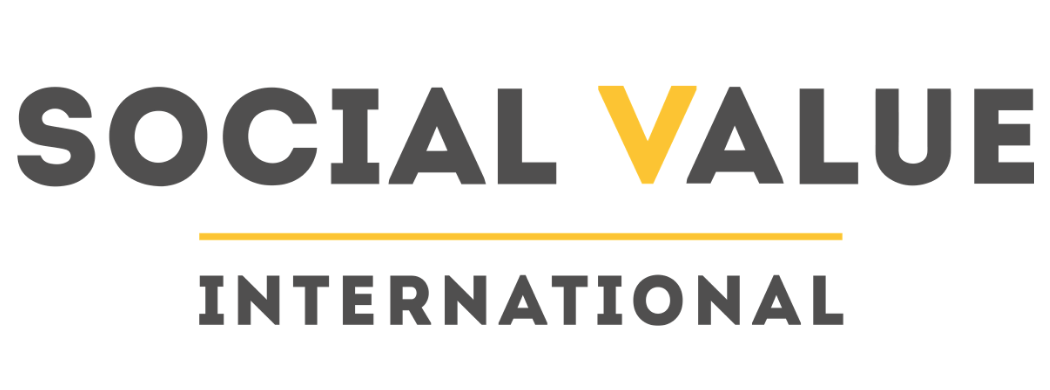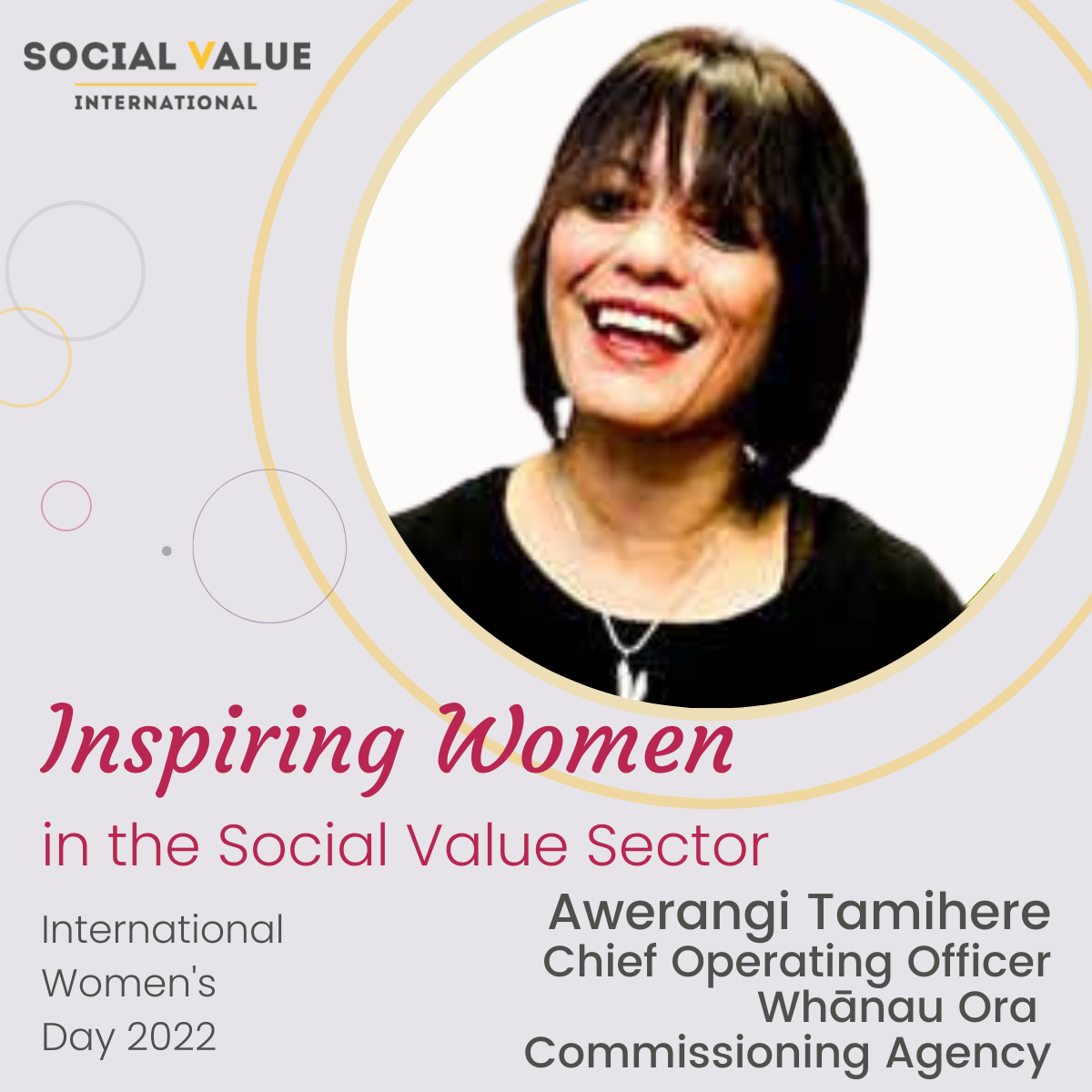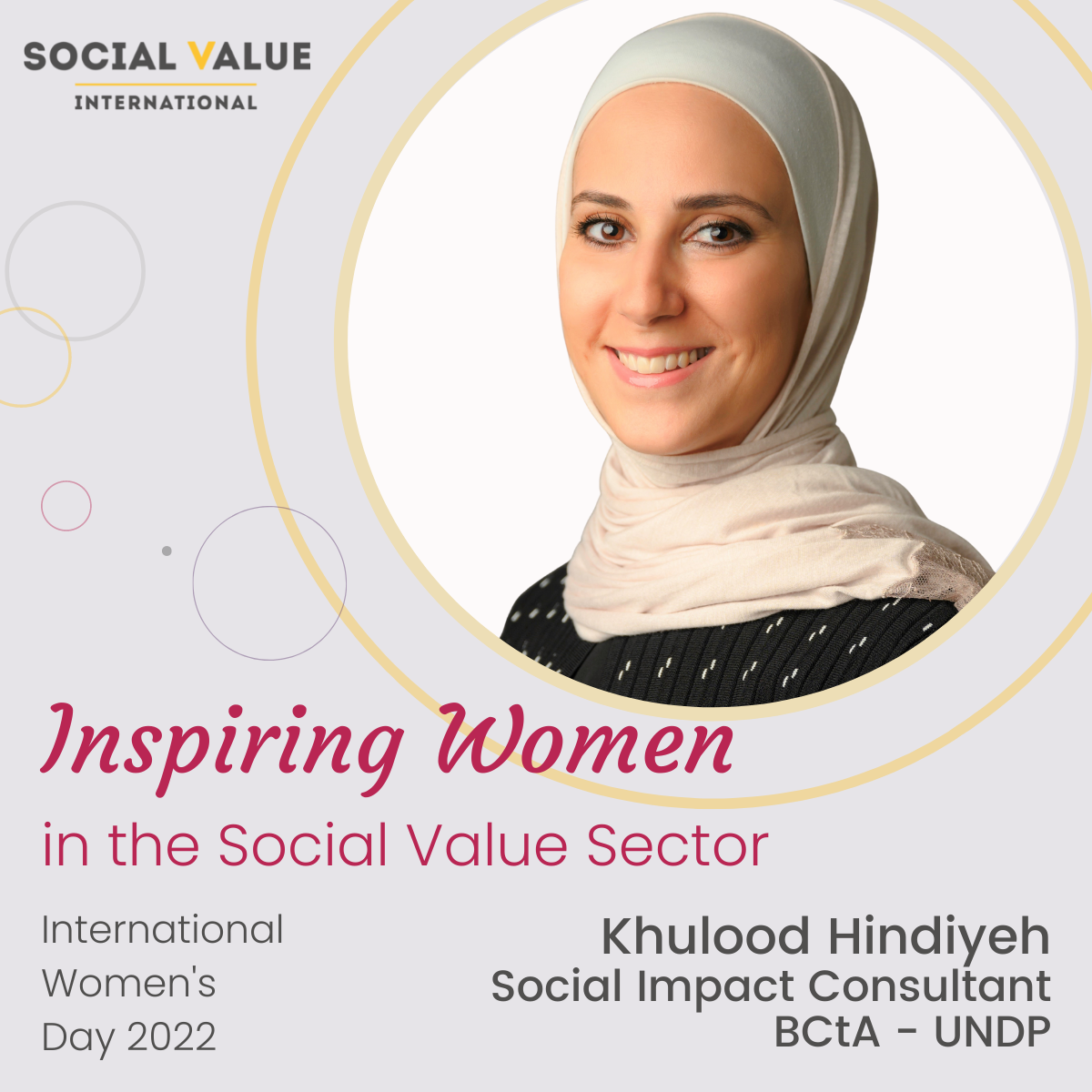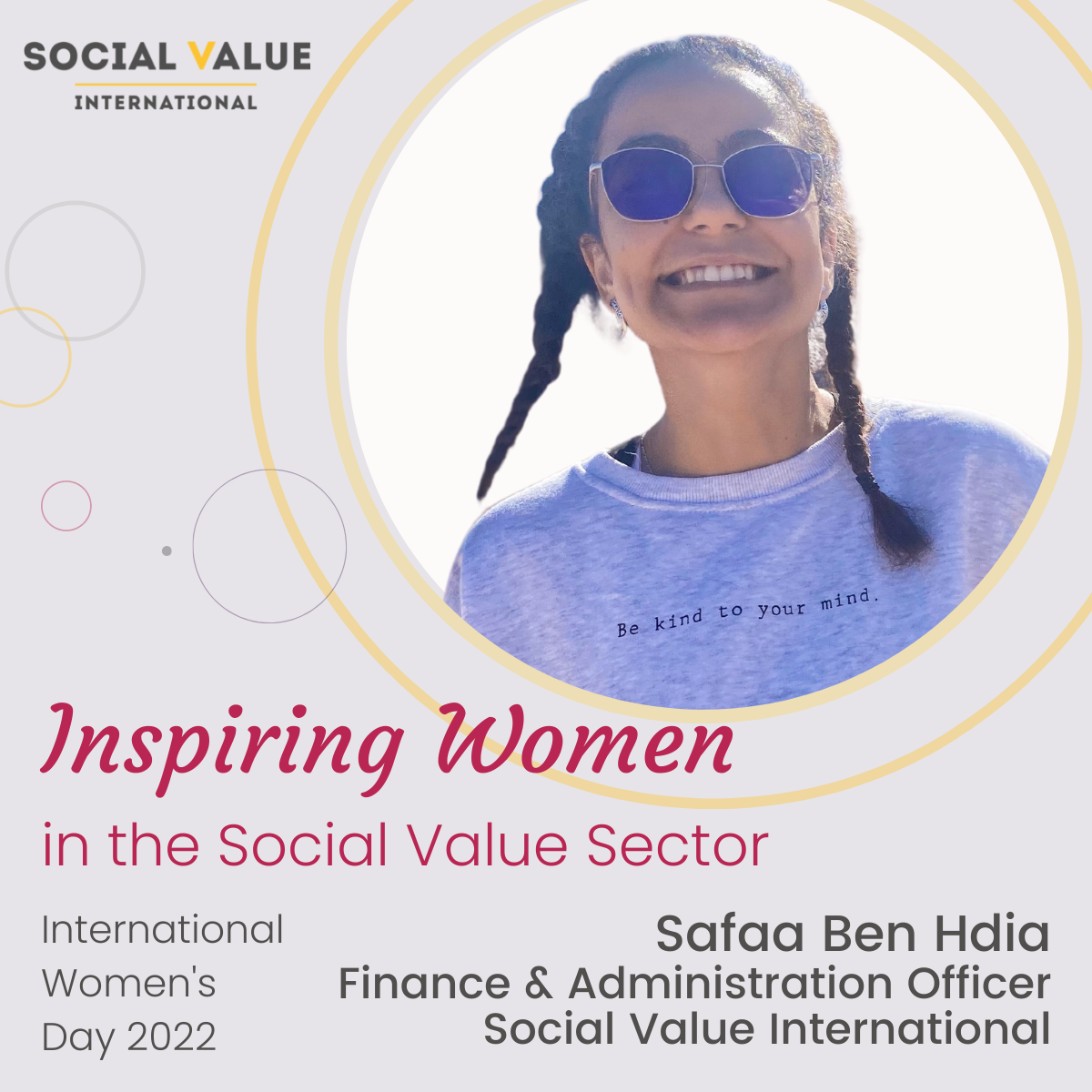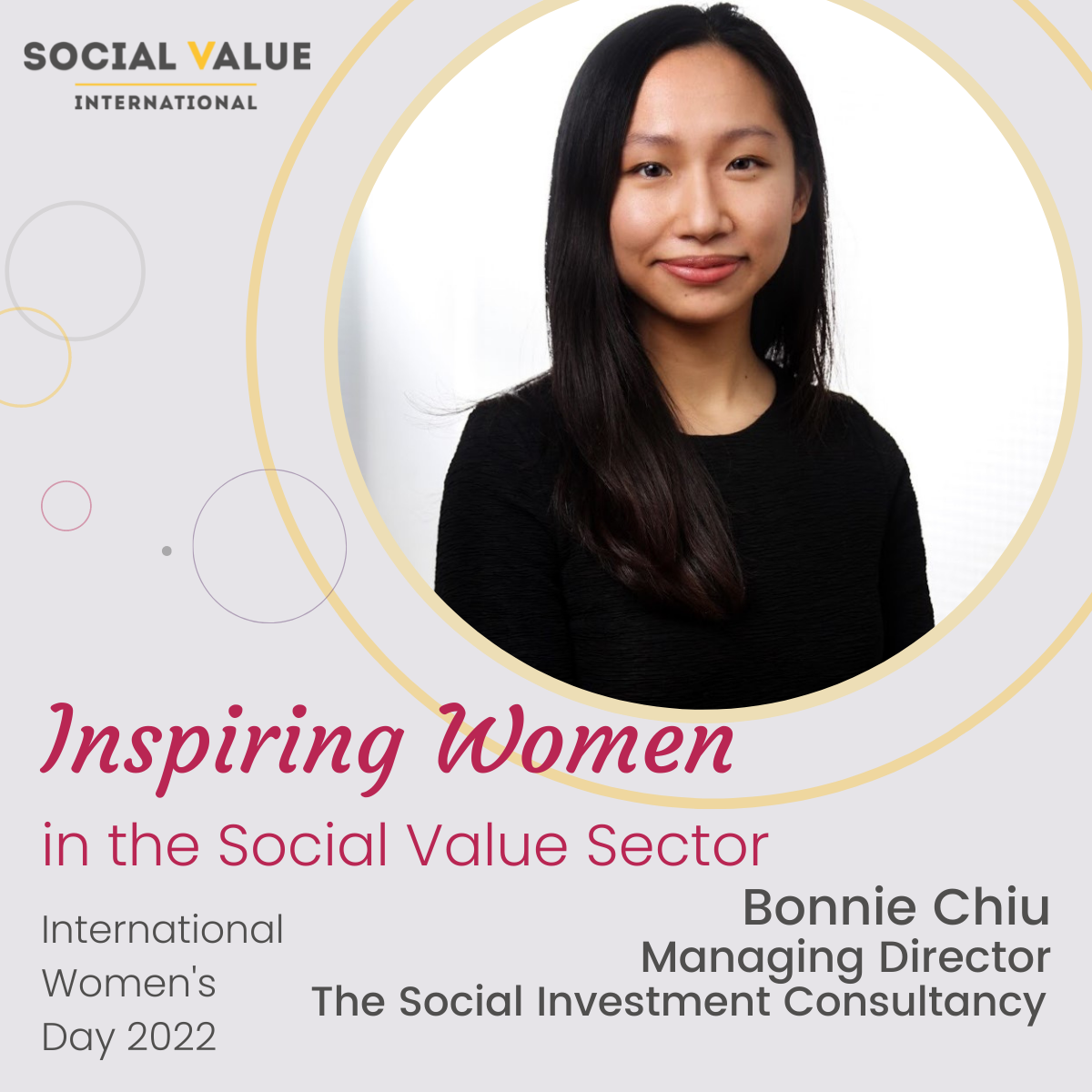#BreakTheBias…perspectives from 5 inspirational women
International Women’s Day is celebrated across the world on 8th March each year to reflect on progress made on women’s rights, to call for change and to celebrate acts of courage and determination by ordinary women, in our lives and throughout the world, who have played an extraordinary role in advancing gender equality.
The theme for International Women’s Day 2022 is #BreakTheBias:
Imagine a gender equal world.
A world free of bias, stereotypes, and discrimination.
A world that is diverse, equitable, and inclusive.
A world where difference is valued and celebrated.
Together we can forge women’s equality.
Collectively we can all #BreakTheBias.
The social value movement exists because we believe in a world of equality, social justice and human rights, and so, to mark IWD2022, SVI invited five exceptional women within the social value movement to share the amazing work they are doing to #BreakTheBias, advance gender equality and create a sustainable tomorrow for us all. We also asked them how the social value movement could help tackle gender bias and what more could be done to address the biases that exist within our movement itself.
Let us introduce you to:
Stephanie Robertson, Founder & CEO, SiMPACT Strategy Group
Awerangi Tamihere, Chief Operating Officer, Whānau Ora Commissioning Agency
Khulood Hindiyeh, Social Impact Consultant BCtA - UNDP
Safaa Ben Hdia, Finance & Administration Officer, SVI
Bonnie Chiu, Managing Director, The Social Investment Consultancy
Read their stories and reflections below.
The theme for International Women's Day 2022 is #BreakTheBias - what have you done to help achieve this?
Stephanie: One of my early professional roles was to support the advancement of women in politics, across Canada. This was formative! The differences between the experiences of women and men offering themselves up for leadership were stark and vivid. These imbalances remain and unfortunately are often worse than before. There is much work to be done.
Awerangi: My career and the work we do here follows on from the mothers, grandmothers, aunties who came before us. This work is not new to us, we are continuing to follow their lead in championing our communities and challenging inequity.
Khulood: Breaking the bias for me is about working towards a world free of stereotypes and discrimination (no matter how you look or appear). A world that is diverse, equitable and inclusive. As a Muslim Arab lady with great ambitions to make a difference, my journey was full of bumps. However, with the support of my family and belief in myself, I broke the bias as the first Jordanian to get a scholarship to complete the MA Degree in CSR from the UK, when I established and lead the Sustainability Department at one of the biggest financial institutions in the Arab Region, when I was the first Arabic speaking profession who became a certified practitioner in my field, and when I became what I was dreaming of: a professional sustainability and social impact Advisor leading big projects for many esteemed global organizations. Breaking the bias is about seeing no one and nothing as a barrier, but as a challenge and a step forward that brings you closer to achieve your dreams.
Safaa: I think the best approach to breaking the bias for me was to always try to stay true to myself. It was a challenge having grown up in a small town in Tunisia, North Africa, where I was exposed to this bias firsthand. But that started to change when I was lucky enough to go to a good university and to be surrounded by powerful women who taught me to unapologetically be myself and to grow out of the learned shame, we carry around inside of us. Alone, my impact will remain insignificant but together along with the women who paved this way for us and thanks to all the wonderful women who are fighting this battle in their own ways we can reach a better and more equitable world.
Bonnie: Almost a decade ago, I founded a social enterprise called Lensational (http://lensational.org), which enables women and girls tell their stories through images. A lot of those stories challenge gender and cultural stereotypes, and aim to inspire other women and girls - “If you can’t see it, you can’t be it.” Now as part of my consulting work, I help organisations embed diversity, equity and inclusion (DEI) into their day to day work and their strategies, and evaluate the impact of DEI programmes, so that my clients can be empowered to #BreaktheBias!
How can the social value movement help to #BreakTheBias around gender?
Stephanie: Unwavering commitment to stakeholder voice and transparency in how we hear, acknowledge and embed that voice in our work will contribute to #BreakTheBias. Being accountable for what we do, intended and unintended, this will #BreakTheBias. This is the role of #socialvalue.
Awerangi: The social value movement must continue to uphold the mana (voice, power) of women at the forefront leading change. We must tell the stories and listen to the voices of those who are creating the change that matters.
Khulood: Social value sheds light on initiatives and programs that create a huge impact on marginalized people, especially women from all over the world, with the main objective of enhancing living standards and achieving wellbeing. I personally have experienced great support from social value throughout my professional journey as a certified practitioner through effective engagements with other professionals, sharing experience with global peers, and exposure for new knowledge.
Safaa: By realizing how valid the first principle of Social Value is which is to Involve all stakeholders, and to emphasize and grasp the importance of our diversity and to know that all humanity is just as important no matter race, class, gender, sexual orientation, language, geographical location, ability, and religion.
Bonnie: Social value movement advocates for accounting for social value - and gender equality is always material to the creation of social value. Promoting this mindset shift can help us uncover where gender inequalities exist, often entrenched by biases, and then do something about it.
What more can be done to #BreaktheBias within the social value movement itself?
Stephanie: I have been really thinking about this in the Canadian context. We need to be relentlessly proactive about inviting people in, listening, considering what we learn, recognizing our own privilege and biases, ensuring all have a voice. The journey will never stop, nor should it. Inclusion is key to wellbeing. This is the social value mandate.
Awerangi: We must continue to take a bottom up approach in order to meaningfully disrupt inequitable power systems. We have to be a backbone that supports grassroots communities and bottom up movements. This isn’t new, there are always people who have challenged the status quo. We have to listen to them, and take the next step in a continuous system of movement.
Khulood: The social value movement can take an initiative to measure the impact of engaging women and breaking the bias in certain communities, highlighting the great benefits and returns that companies can get because of fair and equitable practices. We can also support close collaborations to be created, encouraging them to introduce new targets and KPIs that aim at breaking the bias around gender.
Safaa: I grew tremendously both personally and professionally since I joined the community of changemakers, but not everyone has the privileges to get the same education and to be exposed to the same experiences I did, which is why I think one of the things the resources of the movement should be focused on is raising awareness by making the information more easily accessible in all parts of the world and engaging the youth as it is their future that is at stake. Otherwise, we risk becoming a movement only for the privileged.
Bonnie: There needs to be more explicit focus that gender is part of social value. Often times we just assume, but then gender gets left behind or forgotten.
Also, when we talk about gender, we need to think of it in terms of intersectionality - that gender intersects with other characteristics such as race, disability, class, etc to create overlapping systems of disadvantage. Without this intersectional lens, we will only be able to #BreaktheBias for privileged women - and won’t be able to ultimately achieve the social value movement’s goal of addressing inequality.
What is clear from these responses is that although the week of International Women’s Day is coming to an end, our fight for equality certainly is not – there is still a long way to go. The social value movement is a unique position to help achieve #SDG5 but in order to do so, we must continuously work to break our biases with the movement, recognise power, and ensure the benefits of social value are felt by all, for all. Through our collective mission to change the way society accounts for value, SVI and our amazing global community will continue to work towards breaking the bias and a more equitable and sustainable future for us all.
